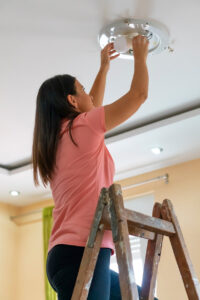If you wish you had some of that technology for your own, well, you can. Keep reading to learn more about motion sensor lights and how you can get them.
Passive infrared (PIR) Active infrared (sometimes also called area reflective) Photoelectric Microwave Dual technology
Check out our motion sensors guide for more information. Here are some typical reasons you might want to consider buying motion sensor lights. Most outdoor lights come with a particular bulb type already installed, while most indoor lights are just a single bulb. So if you have a strong opinion about which bulb to use, make sure to check the light specs before you buy. Figuring out the right power source will depend on your climate and desired light placement. But to get you on your way, here’s a really broad idea of what installation might be like. If you’re replacing an existing hardwired or mounted light fixture, that will be a little trickier. Again, the manufacturer should provide instructions. If you have to tap into your home’s wires and don’t have previous electrical experience, we strongly recommend seeking professional assistance. If you’re installing a light outdoors, make sure to weatherproof any wires or cords. You don’t want to ruin or short the light, and you especially don’t want any electrical accidents. For instance, you can connect smart Philips Hue or LIFX bulbs to branded motion sensors to get that motion detection function. Decide whether you need a motion sensor light: Look at your circumstances and decide if you could use a motion-sensitive light for safety or convenience. Choose a light: Look at location, bulb type, light pattern, and power source to choose the best possible light. Install your light: Follow the manufacturer’s instructions to securely install your new light. Connect the light to your smart home: This doesn’t apply to most motion detector lights, which sadly lack home automation. If your light has a separate motion sensor, it’s more likely to connect to the broader smart home.


